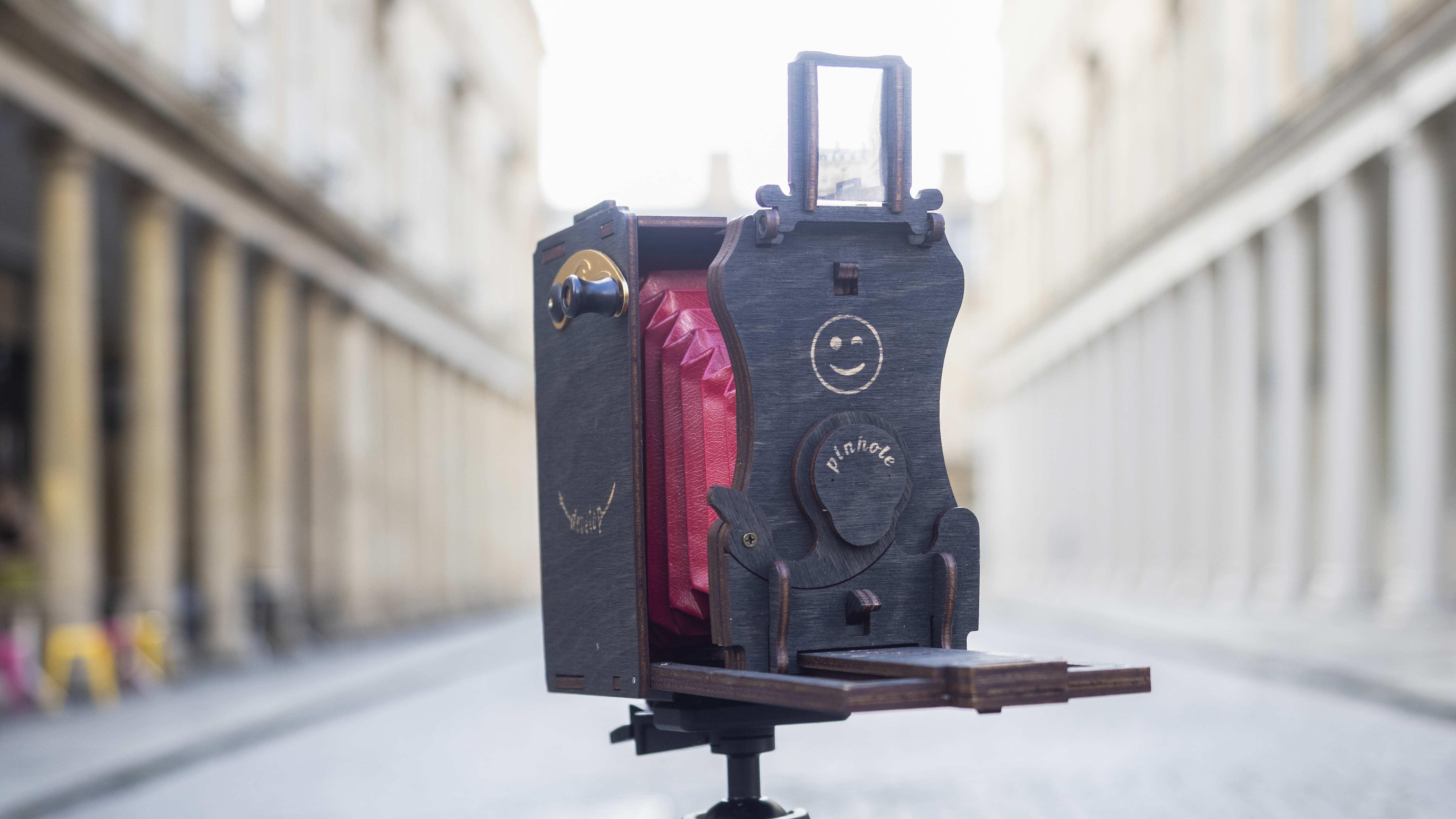Pin hole cameras: is there any point in 2022?
Pin hole cameras are the ultimate in retro photography. But is there any point to this 11th Century tech, here in the 21st?

The pin hole camera was invented in the 11th Century, essentially marking the start of photography. But here, today, in the 21st Century, is it any more than a novelty – or does it still have some value?
As with any photographic tool or process, even though it's obviously an outdated technology, there will always be fundamental lessons to be learned from the pin hole camera. This is particularly true given its simple and affordable assembly, making it an excellent way to teach the basics of photography from the ground up.
So, exactly what is a pin hole camera? Essentially it's just a lightproof space with a perforated hole (the aperture). Which means you can make this kind of camera out of just about anything, from shoe boxes (which are often used in classrooms to teach photographic principles to youngsters) to camper vans.
By teaching these basics of photography, we not only learn the nuts and bolts of how it works but also the history from which the art form came. Certainly, most people find it hard to believe that it originated in the 11th Century – probably because modern generations assume that taking pictures is an electronic process.
Of course, that's not true. And the lack of electronics means a lack of cost, making this technology an incredibly inexpensive way to explore the art of imaging. Whether you learn how to make a pin hole camera using a spare body cap, you try out a ready made camera like the all-wood Jollylook Pinhole or beer can-converted Solar Can, or you buy a CNC-precision lens like the Thingify Pinhole Pro Max, there are plenty of avenues for entry.
Do pin hole cameras still have any merit, though, beyond a fondness for the retro? Well, in our opinion, there is merit in every photographic technique where the finished product requires that kind of visual expression. Whether it's pin hole cameras, instant cameras, the collodion wet plate process or anything else, if it delivers the desired look then it definitely has merit.
And the pin hole look is an incredibly distinct one – though incredibly indistinct in its quality! It renders gritty, grainy, vintage-looking scenes, stripped of detail and impressionistic in aesthetic. And though the look can be aped in Photoshop, as it can with things like soft focus lenses and infrared film, the results are never as good as the real thing.
The best camera deals, reviews, product advice, and unmissable photography news, direct to your inbox!
Of course, this article is being written by somebody who has all the aforementioned pin hole paraphernalia on his camera shelf, so your mileage may vary!
Read more:
Jollylook Pinhole camera review
Thingify Pinhole Pro Max review
Best film cameras

James has 25 years experience as a journalist, serving as the head of Digital Camera World for 7 of them. He started working in the photography industry in 2014, product testing and shooting ad campaigns for Olympus, as well as clients like Aston Martin Racing, Elinchrom and L'Oréal. An Olympus / OM System, Canon and Hasselblad shooter, he has a wealth of knowledge on cameras of all makes – and he loves instant cameras, too.
